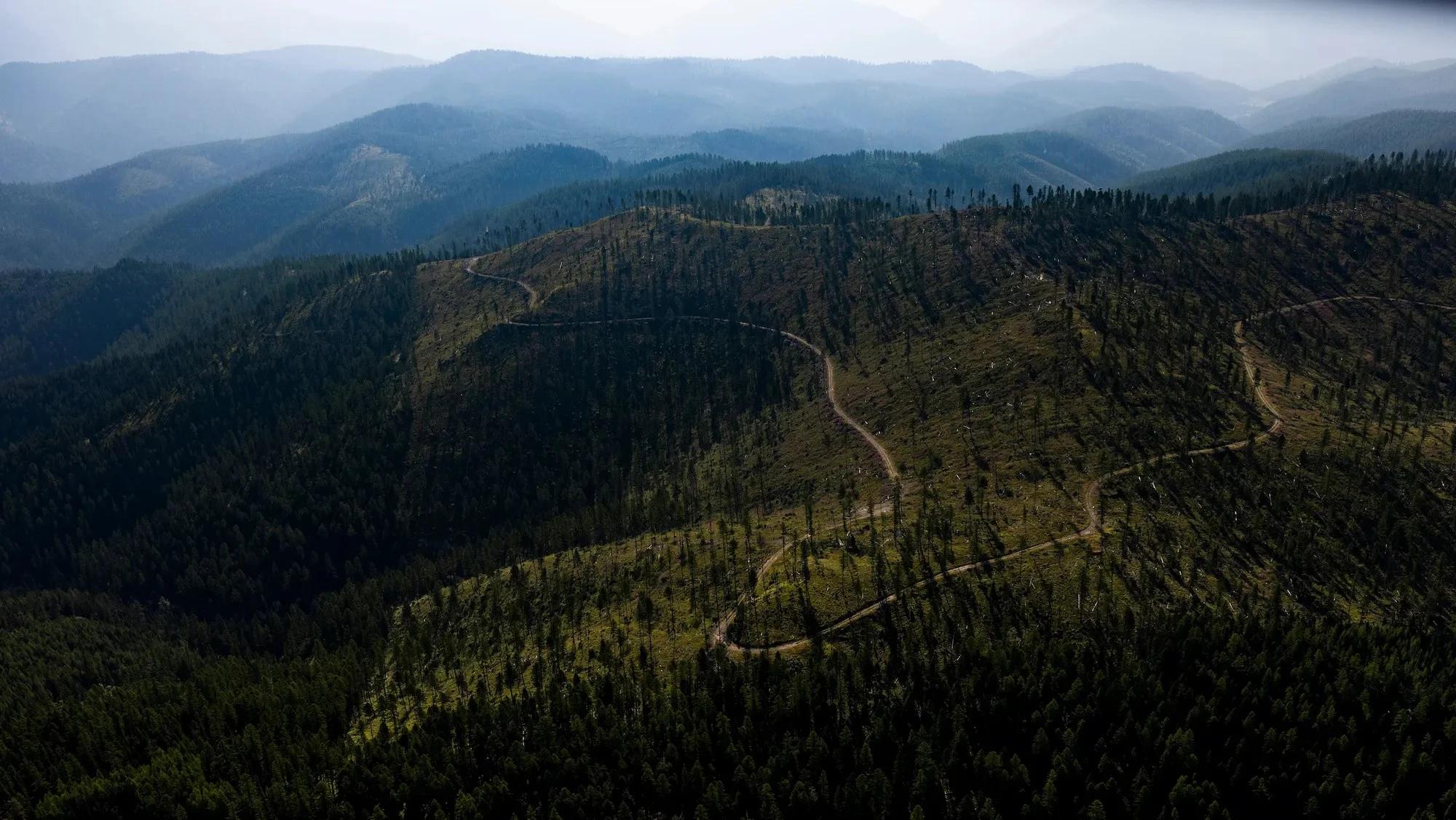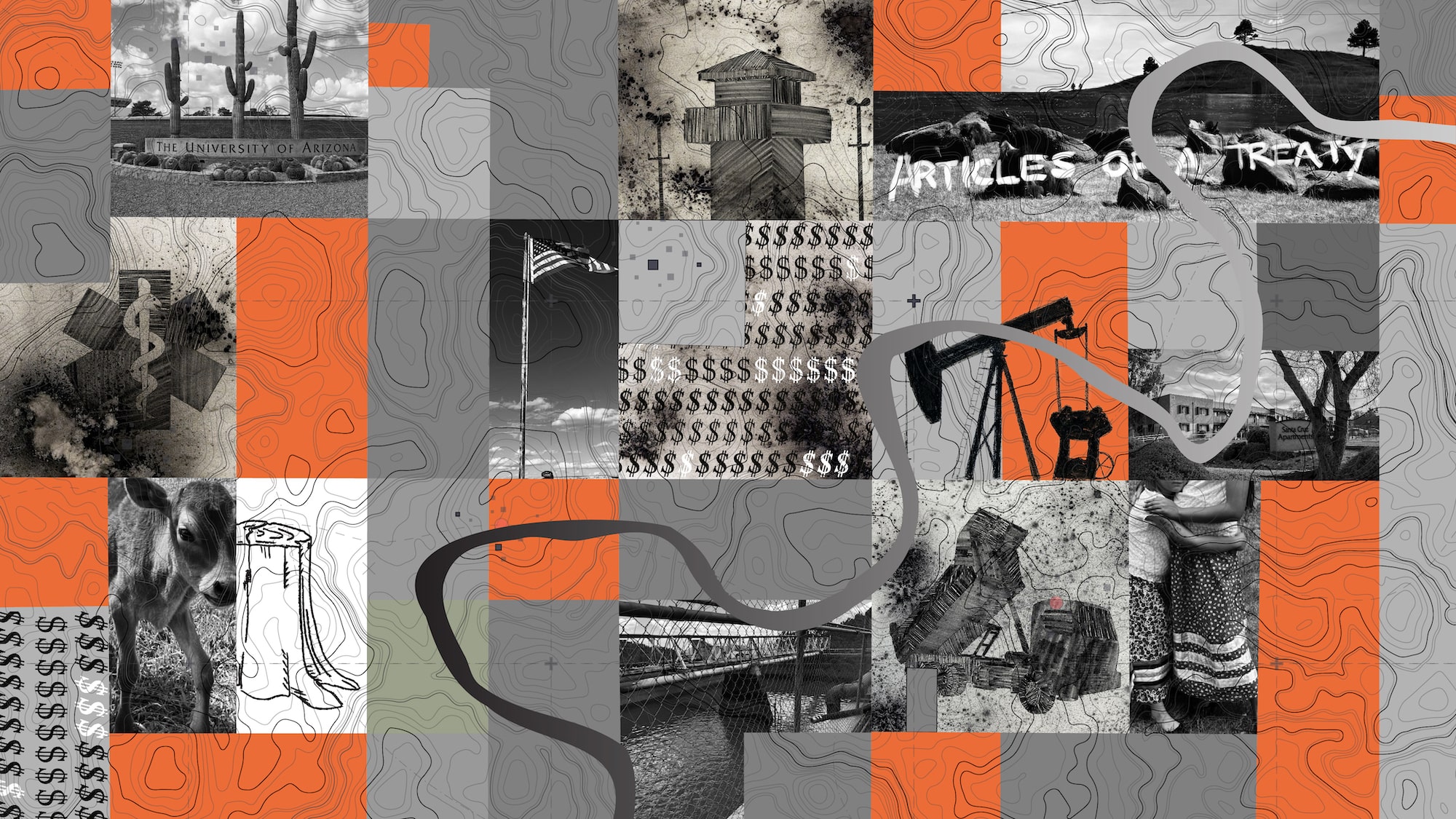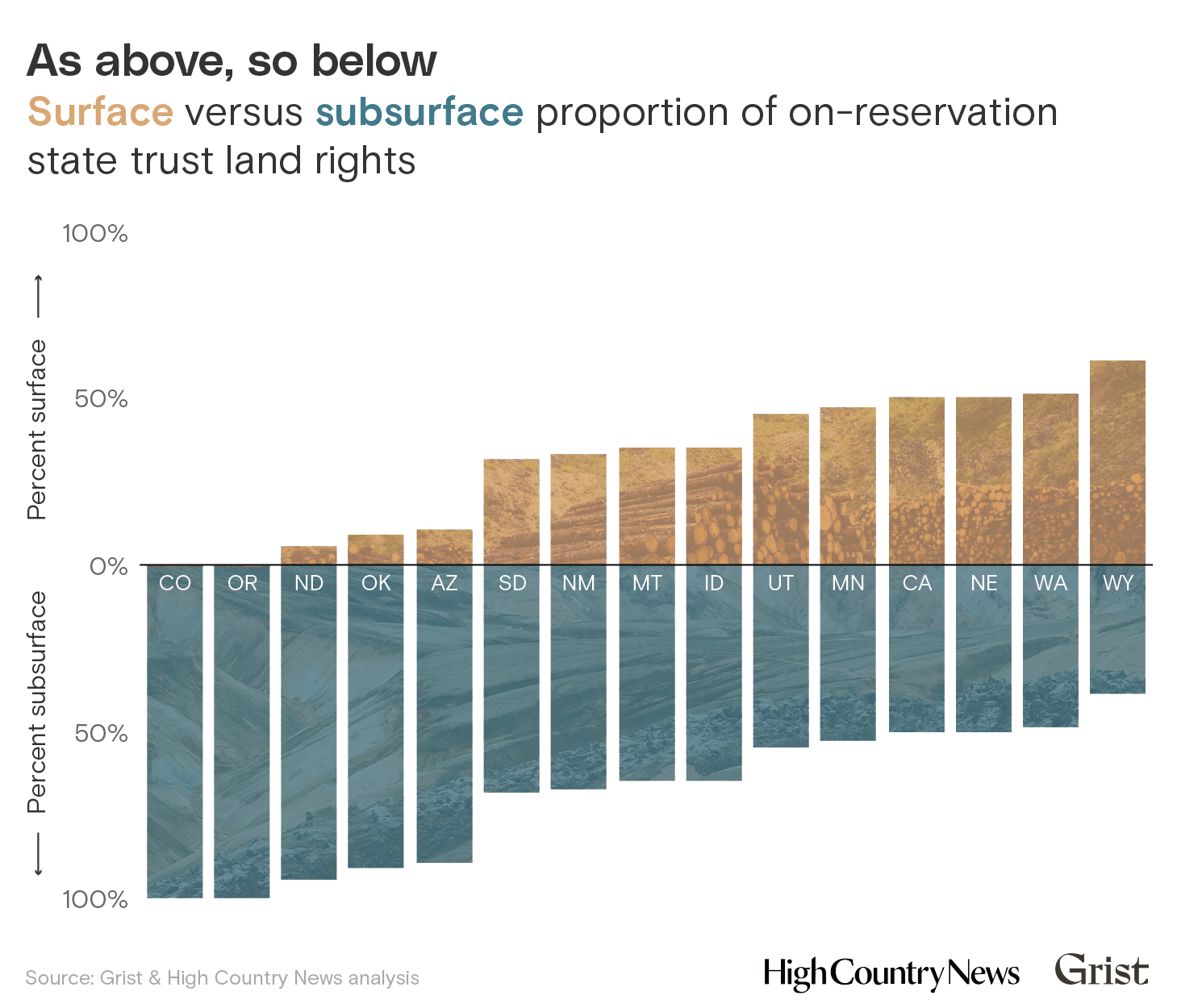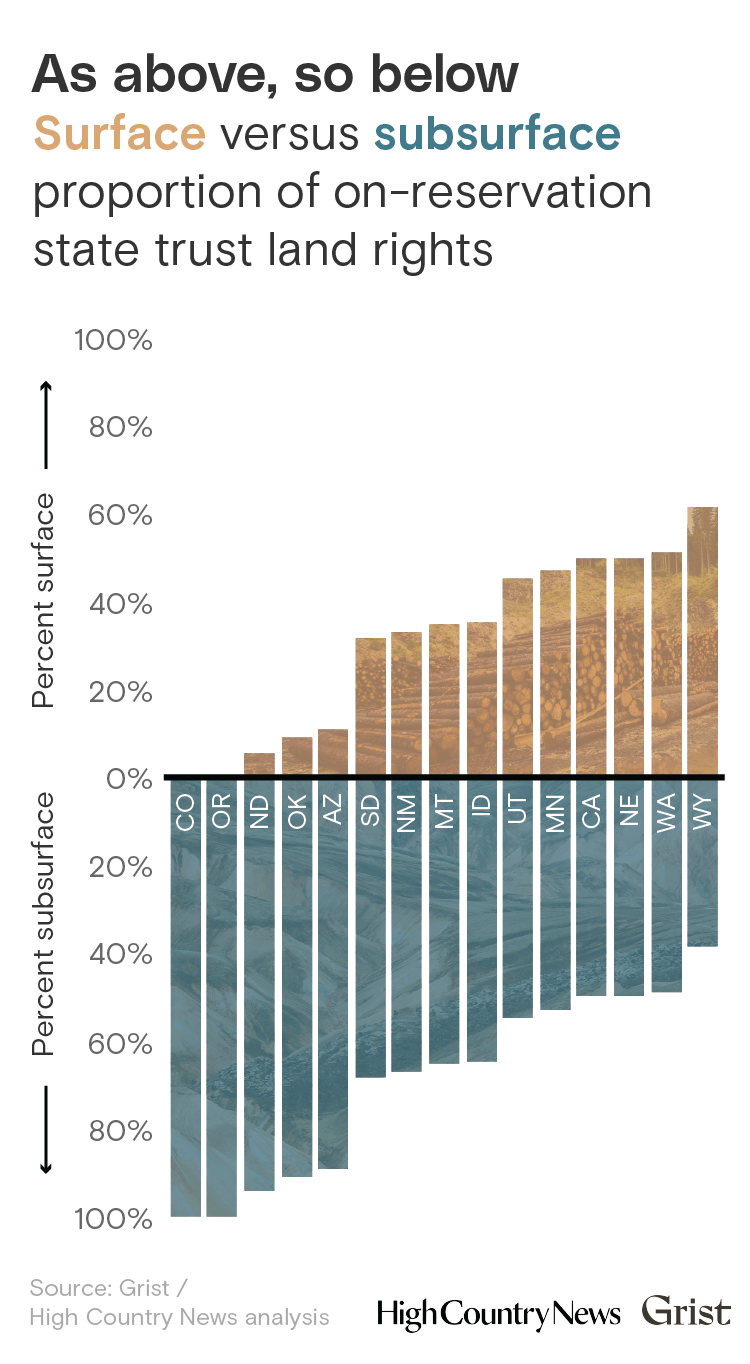On a wet spring day in June, fog shrouded the Mission Mountains on the Flathead Indian Reservation in northwest Montana. Silver beads of rain clung to blades of grass and purple lupine. On a ridge overlooking St. Mary’s Lake in the southeastern corner of the reservation, the land was mostly cleared of trees after state-managed logging operations. Some trees remained, mainly firs and pines, spindly things that once grew in close quarters but now looked exposed without their neighbors.
Viewed from the sky, the logged parcel was strikingly square despite the mountainous terrain. It stood in contrast to the adjacent, tribally managed forest, where timber operations followed the topographic contours of watersheds and ridgelines or imitated fire scars from lightning strikes. “It’s not that they’re mismanaging everything, but their management philosophy and scheme do not align with ours,” said Tony Incashola Jr., the director of tribal resources for the Confederated Salish and Kootenai Tribes, or CSKT, as he looked out the window of his Jeep at the landscape. “Their tactics sometimes don’t align with ours, which in turn affects our capability of managing our land.”
This nearly clear-cut, 640-acre parcel is state trust land and is a small part of the 108,886 state-owned acres, above- and belowground, scattered across the reservation — this despite the tribal nation’s sovereign status.
The Douglas fir and ponderosa pine trees that remained in the square would thrive on the occasional fire and controlled burn after logging operations, benefiting the next generation of trees. Instead, the area was unburned, and shrubs crowded the ground. “I see this stand right here looking the exact same in 20 years,” said Incashola. It’s his first time being on this land, despite a lifetime on the reservation — because it’s state land, the gate has always been locked.
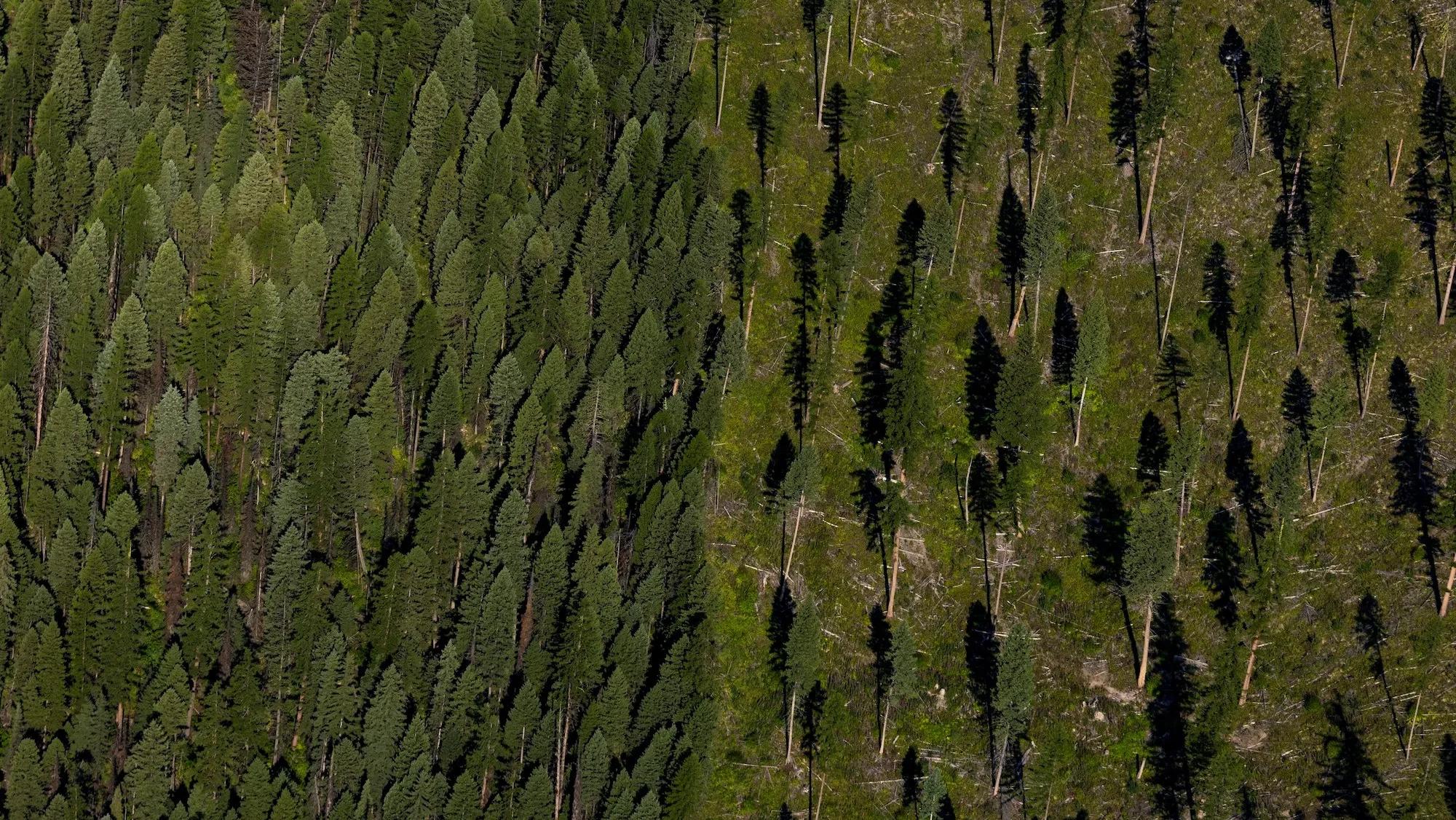
A clear line divides forest managed by the Confederated Salish and Kootenai Tribe and recently harvested state-owned land. Tailyr Irvine / Grist / High Country News

Tony Incashola Jr., director of tribal Resource management for CSKT, looks out at state-owned parcels from an airplane on August 8. Tailyr Irvine / Grist / High Country News
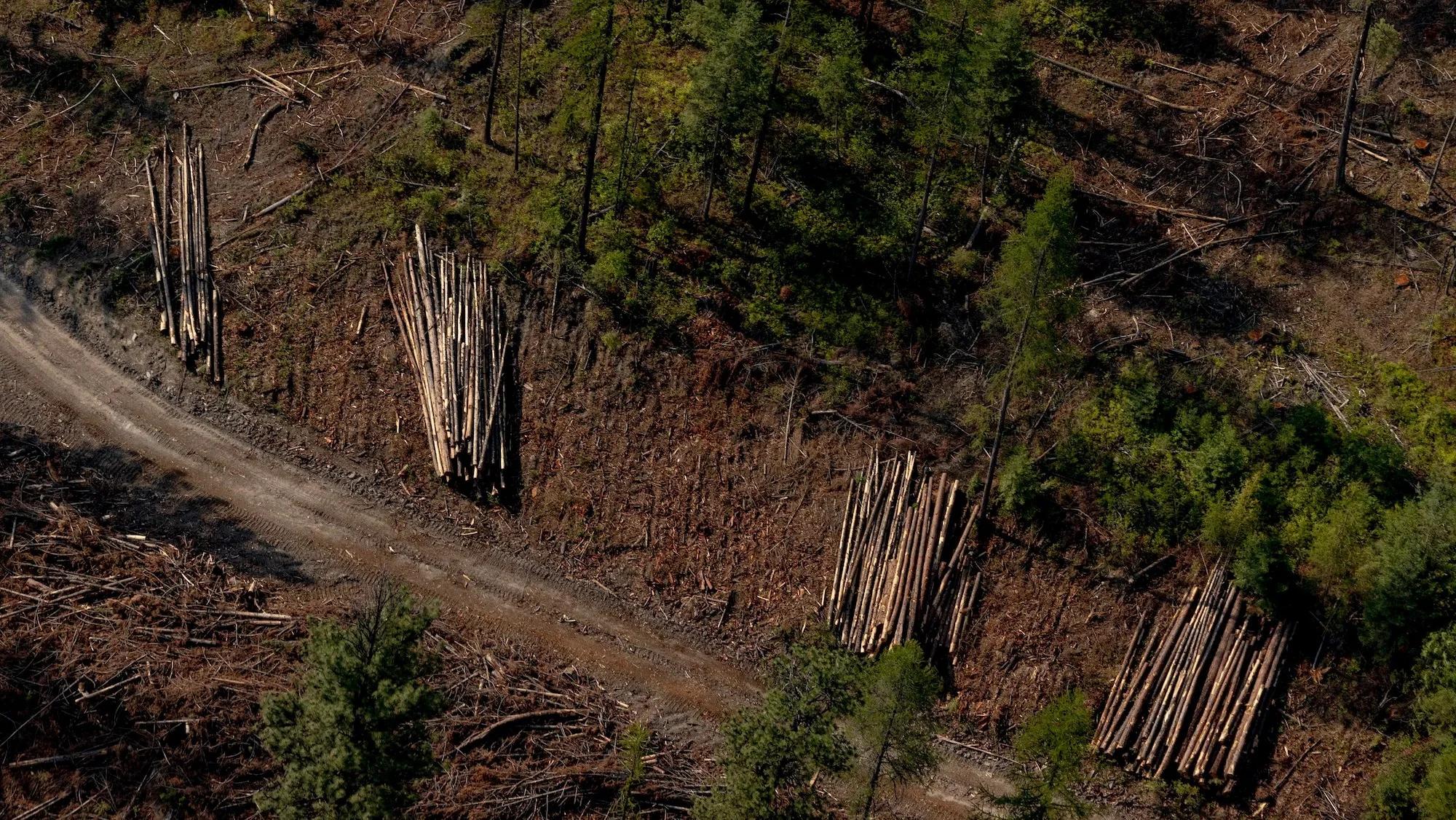
Tailyr Irvine / Grist / High Country News
State trust lands, on and off Indian reservations, make up millions of acres across the Western United States and generate revenue for public schools, universities, jails, hospitals, and other public institutions by leasing them for oil and gas extraction, grazing, rights of way, timber, and more. The state of Montana, for example, manages 5.2 million surface acres and 6.2 million subsurface acres, a term pertaining to oil, gas, minerals, and other underground resources, which distributed $62 million to public institutions in 2023. The majority of that money went to K-12 schools — institutions serving primarily non-Indigenous people.
States received many of these trust lands upon achieving statehood, but more were taken from tribal nations during the late 19th and early 20th centuries through a federal policy of allotment, in which reservations were forcibly cut up into small parcels in an effort to make Indigenous peoples farmers and landowners. The policy allowed for about 90 million acres of reservation lands nationwide to move to non-Indigenous ownership. On the Flathead Reservation, allotment dispossessed the CSKT of a million acres, more than 60,000 of which were taken to fund schools.
But the Flathead Reservation is just one reservation checkerboarded by state trust lands.
To understand how land and resources taken from Indigenous peoples and nations continue to enrich non-Indigenous citizens, Grist and High Country News used publicly available data to identify which reservations have been impacted by state trust land laws and policies; researched the state institutions benefiting from these lands; and compiled data on many of the companies and individuals leasing the land on those reservations. Altogether, we located more than 2 million surface and subsurface acres of land on 79 reservations in 15 states that are used to support public institutions and reduce the financial burden on taxpayers. In at least four states, five tribal nations themselves are the lessees — paying the state for access to, collectively, more than 57,700 acres of land within their own reservation borders.
However, due to instances of outdated and inconsistent data from federal, state, and tribal cartographic sources, our analysis may include lands that do not neatly align with some borders and ownership claims. As a result, our analysis may be off by a few hundred acres. In consultation with tribal and state officials, we have filtered, clipped, expanded, and otherwise standardized multiple data sets with the recognition that in many cases, more accurate land surveying is necessary.
The state trust lands that came from sanctioned land grabs of the early 20th century helped bolster state economies and continue to underwrite non-Indian institutions while infringing on tribal sovereignty. “The justification for them is very old. It goes back to, really, the founding of the U.S.,” said Miriam Jorgensen, research director for the Harvard Project on Indigenous Governance and Development. The goal, she said, was to help settlers and their families gain a firmer foothold in the Western U.S. by funding schools and hospitals for them. “There’s definitely a colonial imperative in the existence of those lands.”
Although tribal citizens are a part of the public those institutions are supposed to serve, their services often fall short. On the Flathead Reservation, for example, Indigenous youth attend public schools funded in part by state trust lands inside the nation’s boundaries. However, the state is currently being sued by the CSKT, as well as five other tribes, over the state’s failure over decades to adequately teach Indigenous curriculum despite a state mandate to do so.
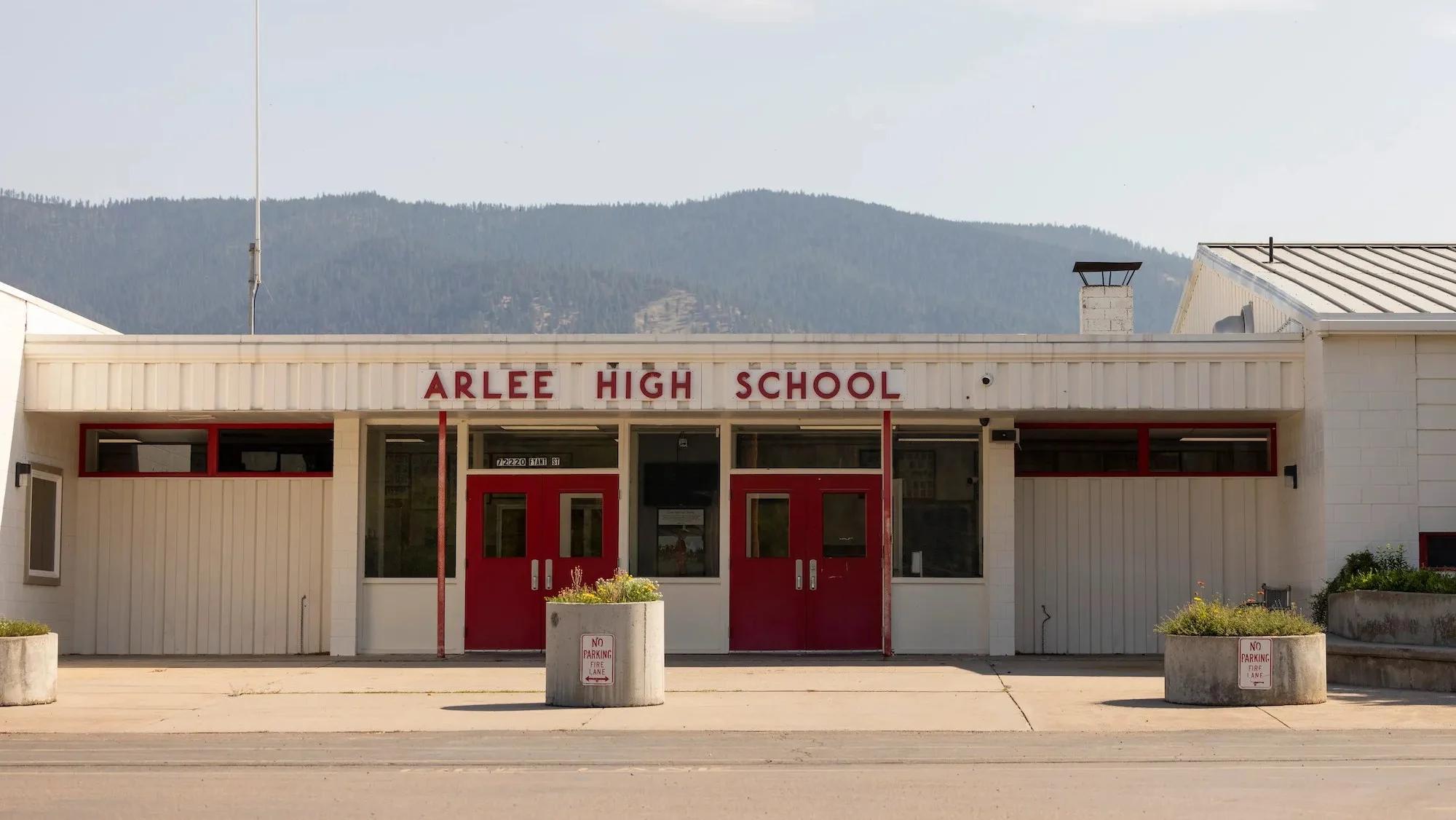
Since 2022, the CSKT and the state of Montana have been negotiating a land exchange in which the tribe will see some 29,200 acres of state trust lands on the reservation returned, which could include the logged, 640-acre parcel near St. Mary’s Lake. In the trade, Montana will receive federal lands from the Department of the Interior and the Department of Agriculture, or potentially both, elsewhere in the state. Such a return has been “the want of our ancestors and the want of our tribal leaders since they were taken,” Incashola said. “It’s not a want for ownership, it’s a want for protection of resources, for making us whole again to manage our forests again the way we want to manage them.”
Tribal nations and states have struggled with state and federal governments over jurisdiction and land since the inception of the United States, says Alex Pearl, who is Chickasaw and a professor of law at the University of Oklahoma. But the potential return of state trust lands represents an opportunity for LandBack on a broad scale: an actionable step toward reckoning with the ongoing dispossession of territories meant to be reserved for tribes. “The LandBack movement that started as protests has become a viable policy, legally,” Pearl said.
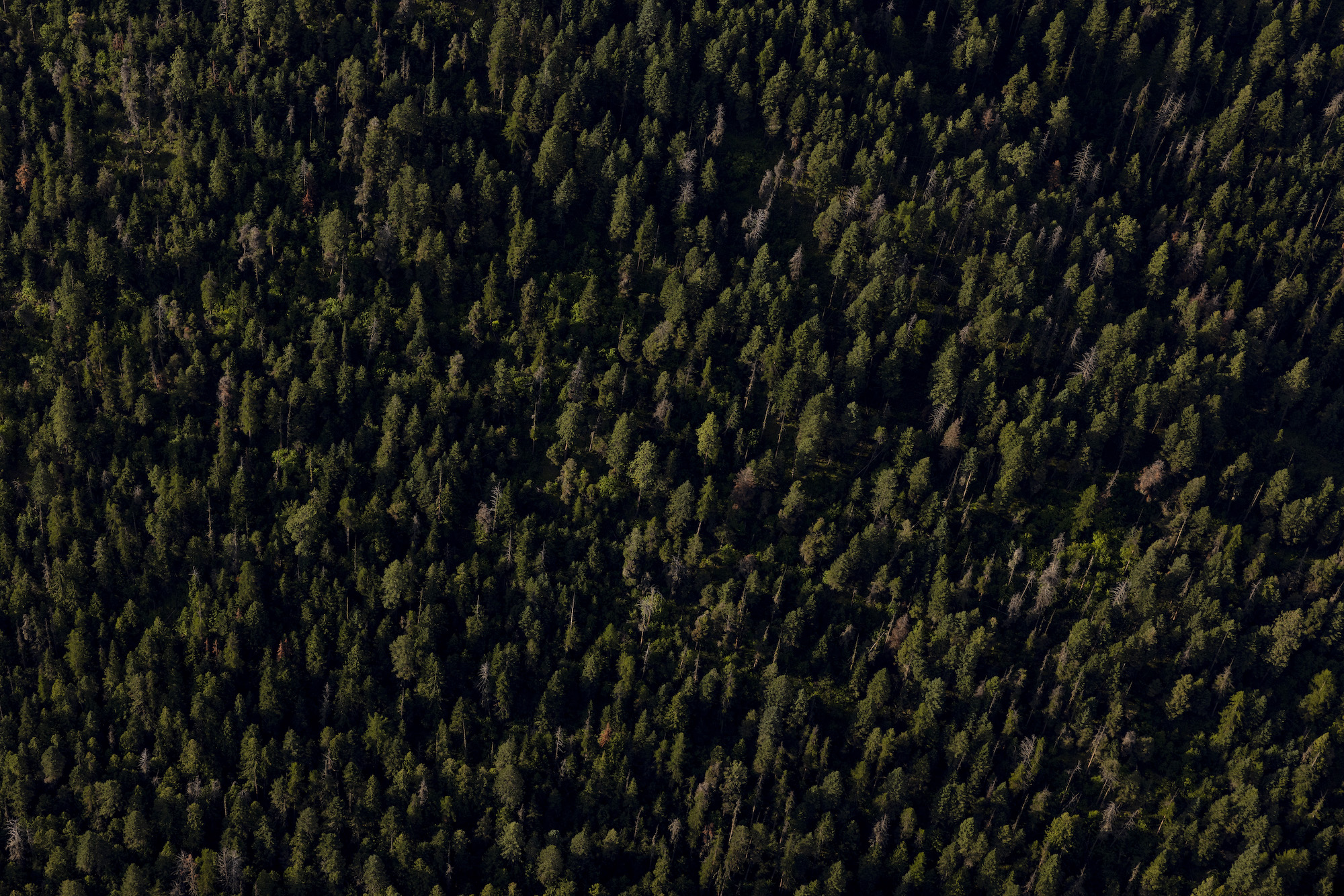
Tailyr Irvine / Grist / High Country News
The Uintah and Ouray Indian Reservation is one of the largest reservations in the U.S., stretching 4.5 million acres across the northeastern corner of Utah. But on closer look, the reservation is checkerboarded, thanks to allotment, with multiple land claims on the reservation by individuals, corporations, and the state of Utah. Altogether, the Ute Tribe oversees about a quarter of its reservation.
The state of Utah owns more than 511,000 surface and subsurface acres of trust lands within the reservation’s borders. And of those acres, the Ute Tribe is leasing 47,000 — nearly 20 percent of all surface trust land acreage on the reservation — for grazing purposes, paying the state to use land well within its own territorial boundaries. According to Utah’s Trust Lands Administration, the agency responsible for managing state trust lands, a grazing permit for a 640-acre plot runs around $300. In the last year alone, the Utes have paid the state more than $25,000 to graze on trust lands on the reservation.
Of all the Indigenous nations in the U.S. that pay states to utilize their own lands, the Ute Tribe leases back the highest number of acres. And while not all states have publicly accessible lessee information with land-use records, of the ones that did, Grist and High Country News found that at least four other tribes also lease nearly 11,000 acres, combined, on their own reservations: the Southern Ute Tribe, Navajo Nation, Pueblo of Laguna, and Zuni Tribe. According to state records, almost all of these tribally leased lands — 99.5 percent — are used for agriculture and grazing.
The Pueblo of Laguna, Zuni, part of the Navajo Reservation, and Ramah Navajo, a chapter of Navajo Nation, are located in the state of New Mexico, which owns nearly 143,000 surface and subsurface acres of state trust lands across a total of 13 reservations. The Navajo Nation leases all 218 acres of New Mexico state trust lands on its reservation, while the Ramah Navajo leases 17 percent of the 24,600 surface state trust land acres within its reservation’s borders. The Pueblo of Laguna leases more than half of the 11,200 surface trust land acres in its territory, while the Zuni Tribe leases 37 of the 60 surface trust land acres located on its reservation. The nations did not comment by press time.
Cris Stainbrook, president of the Indian Land Tenure Foundation, said that for tribes, the cost of leasing state trust lands on their reservations for grazing and agriculture is likely lower than what it would cost to fight for ownership of those lands. But, he added, those lands never should have been taken from tribal ownership in the first place.
“Is it wrong? Is it fundamentally wrong to have to lease what should be your own land? Yes,” said Stainbrook. “But the reality of the situation is, the chances of having the federal or state governments return it is low.”
In theory, tribal nations share access to public resources funded by state trust lands, but that isn’t always the case. For example, Native students tend to fare worse in U.S. public schools, and some don’t attend state-run schools at all. Instead, they enroll in Bureau of Indian Education schools, a system of nearly 200 institutions on 64 reservations that receive funding from the federal government, not state trust lands.
Beneficiaries, including public schools, get revenue generated from a variety of activities, including leases for roads and infrastructure, solar panel installations, and commercial projects. Fossil fuel infrastructure or activity is present on roughly a sixth of on-reservation trust lands nationwide.
While state agencies can exchange trust lands on reservations for federal lands off-reservation, the process is complicated by the state’s legal obligation to produce as much money as possible from trust lands for its beneficiaries. Still, some states are attempting to create statewide systematic processes for returning trust lands.
At the forefront are Washington, which is currently implementing legislation to return lands, and North Dakota, which is moving new legislation through Congress for the same purpose. But because of the lands’ value and the states’ financial obligations, it’s difficult to transfer complete jurisdiction back to Indigenous nations. Trust lands must be swapped for land of equal or greater value, which tends to mean that a transfer is only possible if the land in question doesn’t produce much revenue.
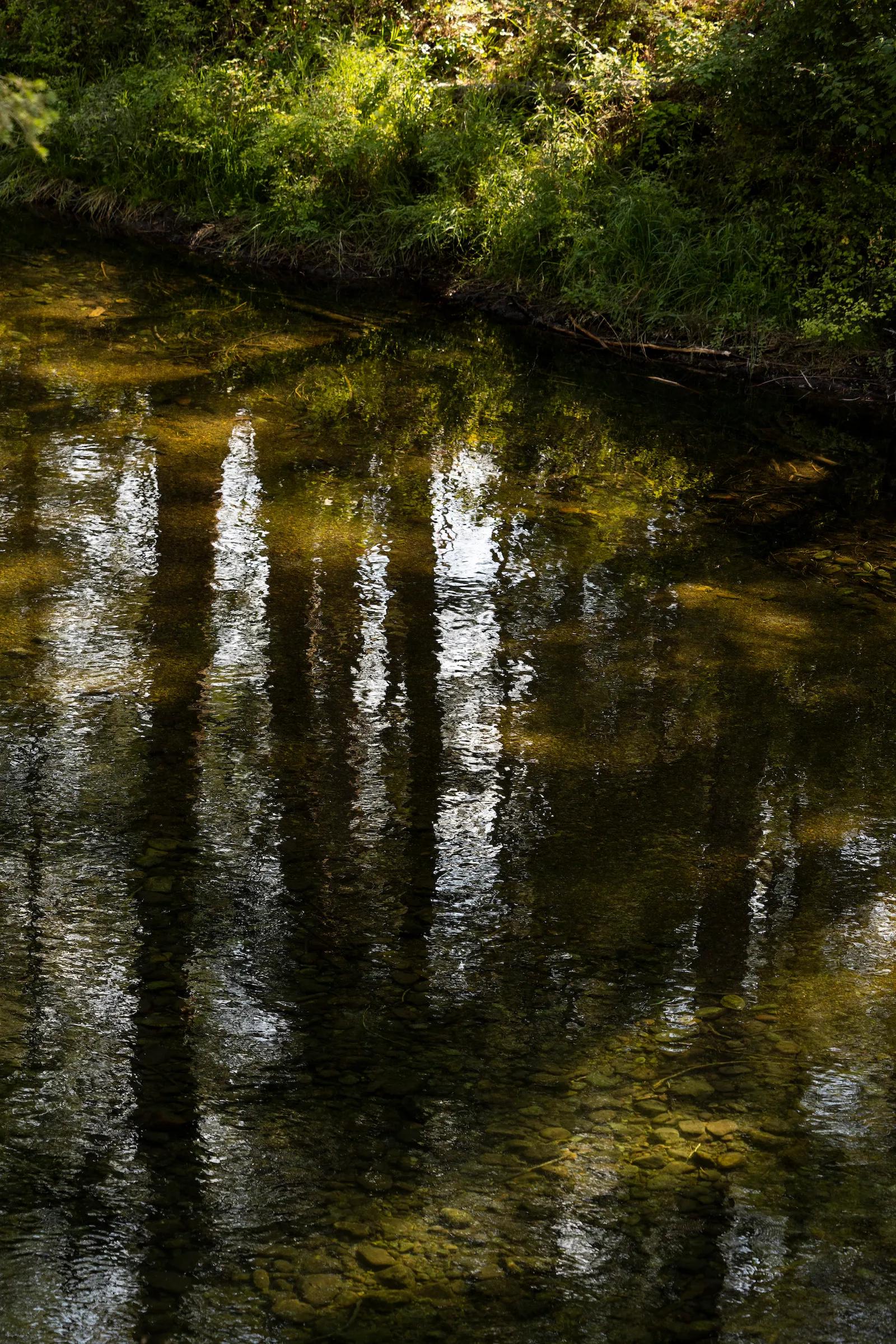

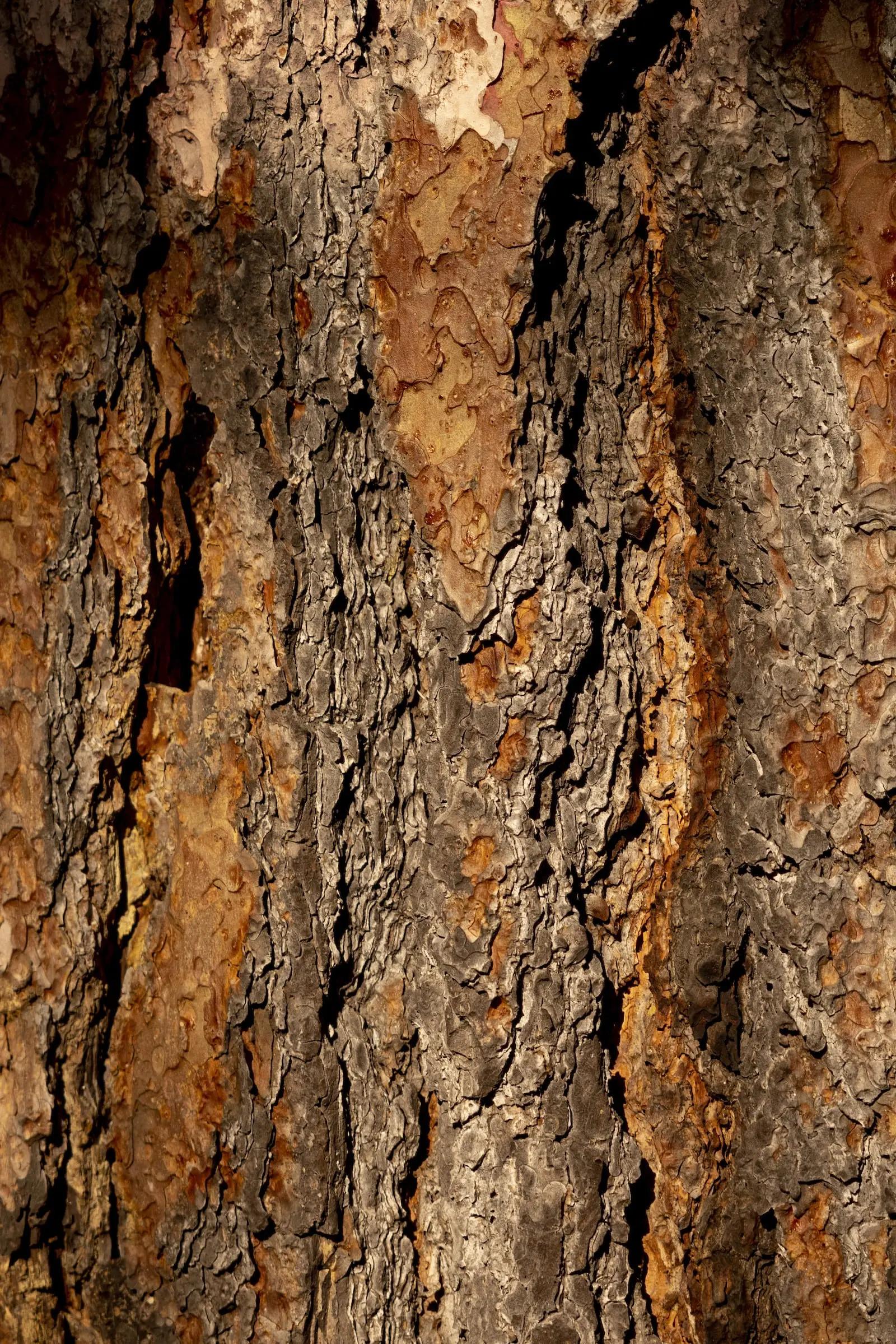
Details from the Jocko Prairie on the Flathead Reservation, part of a project the Confederated Salish and Kootenai Tribes have undertaken to build resilience against large, and more frequent, wildfires associated with climate change. Tailyr Irvine / Grist / High Country News
That’s the case with Washington’s Trust Land Transfer program, which facilitates exchanges of land that the state’s Department of Natural Resources, or DNR, deems unproductive. Those lands are designated as “unproductive” because they might not generate enough revenue to cover maintenance costs, have limited or unsustainable resource extraction, or have resources that are physically inaccessible. A 540-acre plot of land that was transferred to the state Department of Fish and Wildlife in a 2022 pilot program was considered financially unproductive because “the parcel is too sparsely forested for timber harvest, its soils and topography are not suitable for agriculture, it offers low potential for grazing revenue, it is too small for industrial-scale solar power generation, and it is located too close to the 20,000-acre Turnbull National Wildlife Refuge for wind power generation.”
Currently, Washington’s state constitution does not allow for the exchange of subsurface acreage; the DNR retains mineral rights to state trust lands even after exchange. Transfers are funded by the state, with the Legislature paying the DNR the value of the land to be exchanged so the agency can then purchase new land. The value of all the lands that can be exchanged is capped at $30 million every two years.
Even that money isn’t guaranteed: The legislature isn’t obligated to approve the funding for transfers. Additionally, the program is not focused solely on exchanges with Indigenous nations; any public entity can apply for a land transfer. Through the pilot program in 2022, the state Department of Fish and Wildlife, Department of Natural Resources, and Kitsap County received a total of 4,425 acres of federal land valued at more than $17 million in exchange for unproductive trust lands. All three entities proposed using the land to establish fish and wildlife habitat, natural areas, and open space and recreation. None of the proposed projects in the pilot program had tribes listed as receiving agencies for land transfer. However, six of the eight proposals up for funding between 2025 and 2027 would be transferred to tribal nations.
In North Dakota, the Trust Lands Completion Act would allow the state to exchange surface state trust lands on reservations for more accessible federal land or mineral rights elsewhere. The legislation made it through committee in the U.S. Senate last year and, this fall, state officials hope to couple it with bigger land-use bills to pass through the Senate and then the House.
But one of the legislation’s main caveats is that it, like Washington, excludes subsurface acres: North Dakota’s constitution also prohibits ceding mineral rights. North Dakota currently owns 31,000 surface and 200,000 subsurface acres of trust lands on reservations. State Commissioner of University and School Lands Joe Heringer said that returning state trust lands with mineral development would be complicated because of existing development projects and financial agreements.
Right now, the only mineral development happening on reservation-bound state trust lands is on the Fort Berthold Reservation in the state’s northwestern corner, with the Mandan, Hidatsa, and Arikara Nation, also known as the Three Affiliated Tribes.
Initial oil and gas leases are about five years, but they can stay in place for decades if they start producing within that time. “There’s already all sorts of leases and contracts in place that could get really, really messy,” Heringer said.
By design, subsurface rights are superior to surface rights. If land ownership is split — if a tribe, for instance, owns the surface rights while an oil company owns the subsurface rights — the subsurface owner can access its resources, even though the process might be complicated, regardless of what the surface owner wants.
“It’s not worthless, but it’s close to it,” Stainbrook said of returning surface rights without subsurface rights.
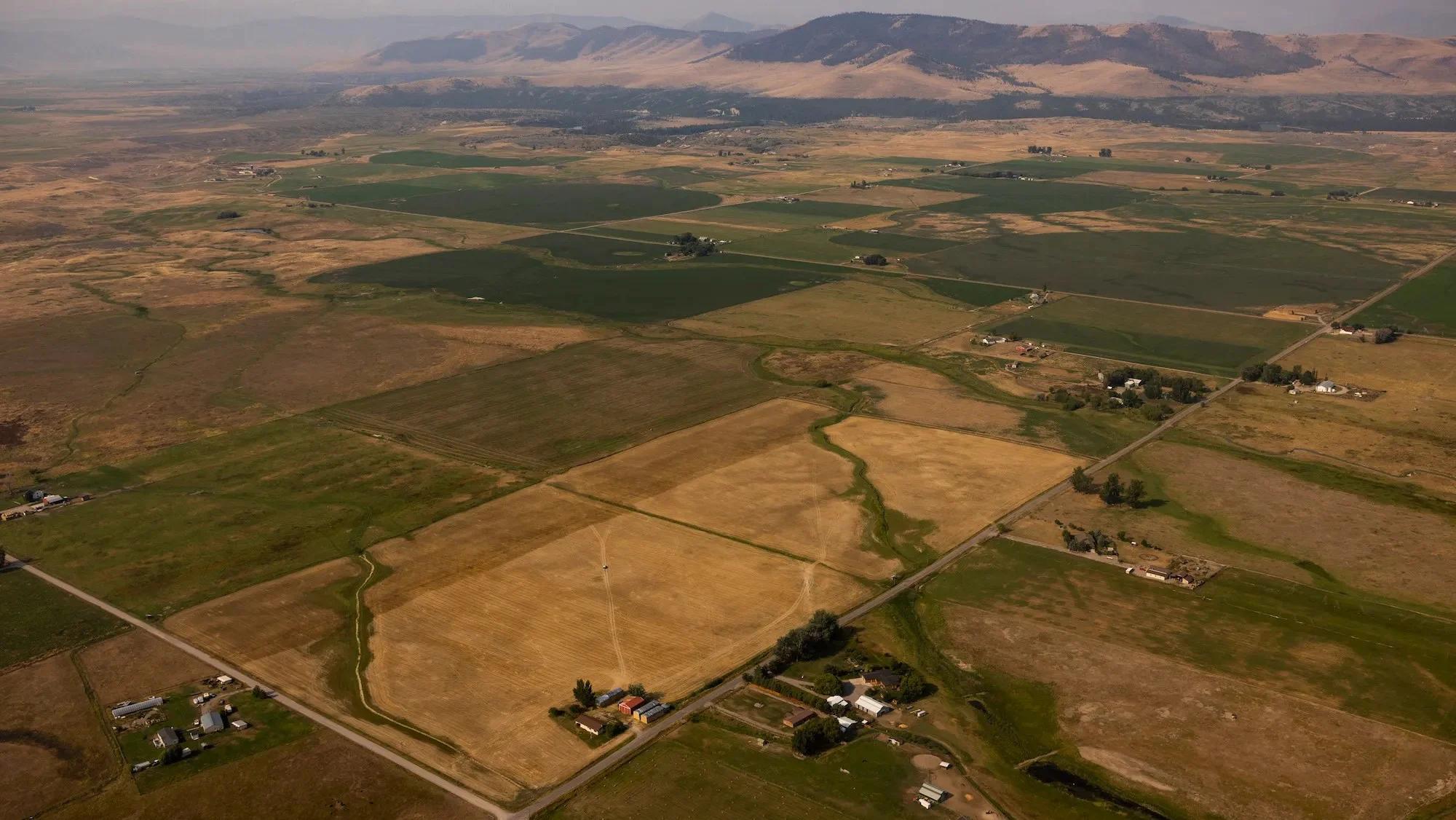
Still, Stainbrook acknowledges that programs to return state trust lands are meaningful because they consolidate surface ownership and jurisdiction and allow tribes to decide surface land use. Plus, he said, there’s a lot of land without subsurface resources to extract, meaning it would be left intact. But split ownership, with tribes owning surface rights and non-tribal entities holding subsurface rights, prevents tribes from fully making their own choices about resource use and management on their lands. And states are not required to consult with tribes on how these lands are used.
“In the sense of tribal sovereignty, it has not increased tribal sovereignty,” Stainbrook said. “In fact, I mean, it’s pretty much the status quo.”
Of the 79 reservations that have state trust lands within their boundaries, tribal governments of 49 of them have received federal Tribal Climate Resilience awards since 2011. These awards are designed to fund and assist tribes in creating adaptation plans and conducting vulnerability and risk assessments as climate change increasingly threatens their homes. But with the existence of state trust lands inside reservation boundaries, coupled with state-driven resource extraction, many tribal governments face hard limits when trying to enact climate mitigation policies — regardless of how much money the federal government puts toward the problem.
In 2023, a wildfire swept the Flathead Reservation, just west of Flathead Lake. Afterwards, the CSKT and the Montana Department of Natural Resources and Conservation, which manages the state’s trust lands, discussed salvage timber operations — in which marketable logs are taken from wildfire-burned forests — on two affected state trust land parcels, both inside the reservation. The tribe approved a road permit for the state to access and salvage logs on one parcel, but not the other, since it wasn’t as impacted by the fire. Later, the tribe found out that the state had gone ahead with salvage operations on the second parcel, bypassing the need for a tribal road permit by accessing it through an adjacent private property.
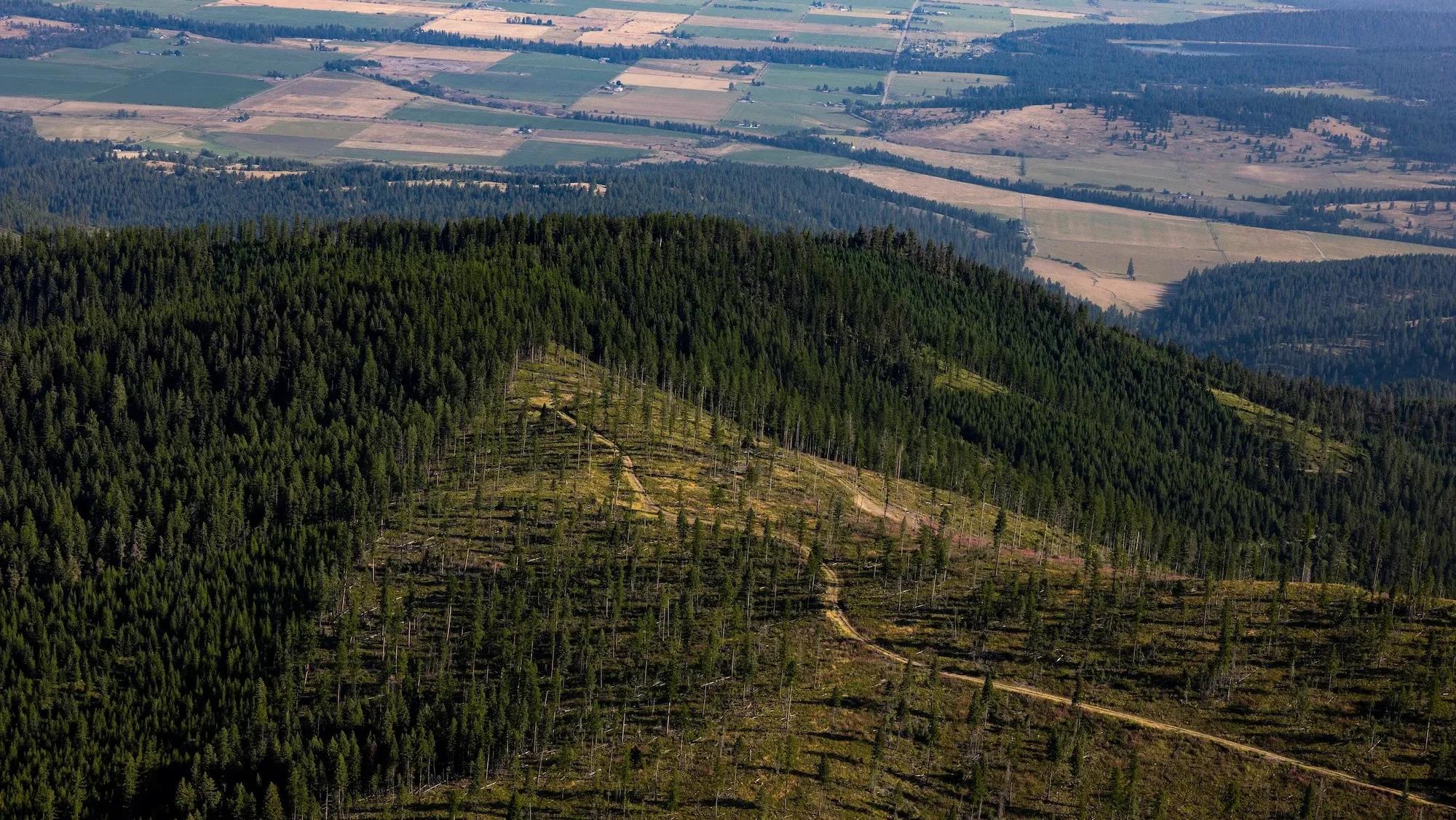
That lack of communication and difference in management strategies is evident on other state trust lands on the reservation: One logged state parcel is adjacent to a sensitive elk calving ground, while another parcel, logged in 2020, sits atop a ridgeline and impacts multiple streams with bull trout and westslope cutthroat trout. The uniformity and scale of the state logging — and the prioritization of profit and yield — do not align with the tribes’ forestry plans, which are tied to cultural values and use of land, Incashola said. “Sometimes the placement of (trust lands) affects cultural practices, or precludes cultural practices from happening on those tracts,” he said. “We can’t do anything about it, because they have the right to manage their land.”
Montana’s Department of Natural Resources and Conservation did not make anyone available to interview for this story, but answered some questions by email and said in a statement that the department “has worked with our Tribal Nations to ensure these lands are stewarded to provide the trust land beneficiaries the full market value for use as required by the State of Montana’s Constitution and the enabling legislation from Congress that created these trust lands.”
Since the 1930s, the CSKT has prioritized reclaiming land, buying private and state trust lands back at market value. Today, the tribe owns more than 60 percent of its reservation.
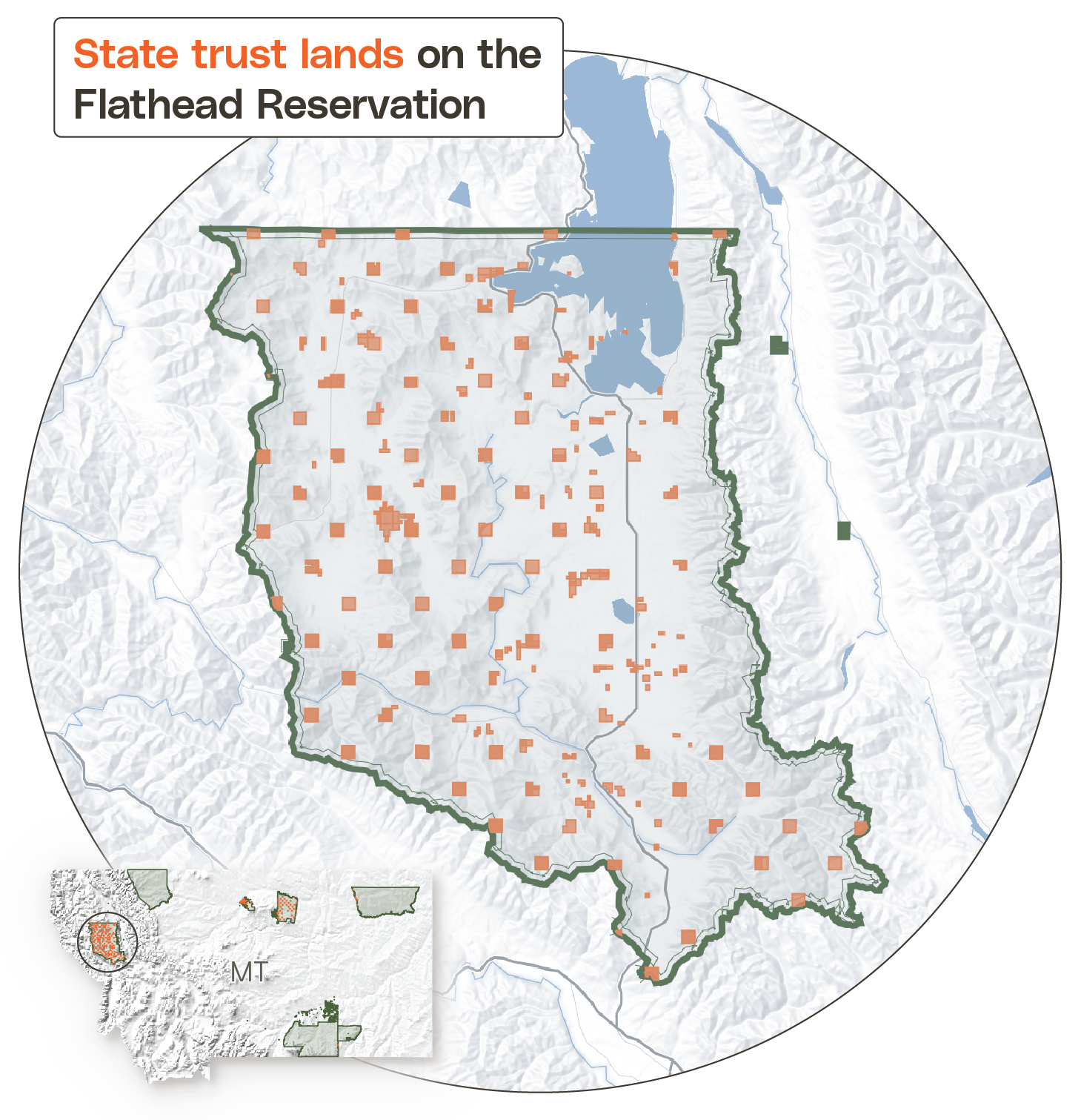
While logging used to be the tribe’s main income source, it has diversified its income streams since the 1990s. Now, the tribe’s long-term goal is for its forests to return to pre-settler conditions and to build climate resiliency by actively managing them with fire. The state’s Montana Climate Solutions Plan from 2020 acknowledged the CSKT as a leader on climate and recommended that the state support tribal nations in climate resilience adaptation. However, that suggestion remains at odds with the state’s management of, and profit from, reservation lands. The 640-acre parcel near the Mission Mountains that Incashola had never been able to visit because of the locked gate, for example, abuts tribal wilderness and is considered a sensitive area. Since 2015, the state has made $775,387.82 from logging that area.
The legislation that included the Montana-CSKT land exchange passed in 2020, but progress has been slow. The exchange doesn’t include all the state trust land on the reservation, which means the selection process of those acres is ongoing. The lands within the tribally protected areas, as well as those near the Mission Mountain Wilderness, are of high priority for the CSKT. There are some state lands that are ineligible, such as those that do not border tribal land. But the state has also interpreted the legislation to exclude subsurface acres that could be used for mining or other extractive activities. The tribe is steadfast that subsurface acres are included in the legislation. The impasse has complicated negotiations.
“It’s out-and-out land theft,” said Minnesota State Senator Mary Kunesh of state trust lands on reservations. Kunesh, a descendant of the Standing Rock Sioux Tribe, has authored two bills that returned state land to tribes, each with a decade or more of advocacy behind it.
On the Leech Lake Band of Ojibwe’s reservation in Minnesota, for example, the tribe owns only about 5 percent of the reservation, although federal legislation recently returned more than 11,000 acres of illegally taken national forest. Meanwhile, the state owns about 17 percent. That ownership has an impact. Tribes in Minnesota do not receive revenue from state trust lands on their reservations, nor do tribal schools, Kunesh says. “Hundreds of thousands of millions of dollars that could have perhaps been used to educate, to create housing, to create economic opportunity have been lost to the tribes,” Kunesh said. Still, “it’s not that the tribes want money. They want the land.”
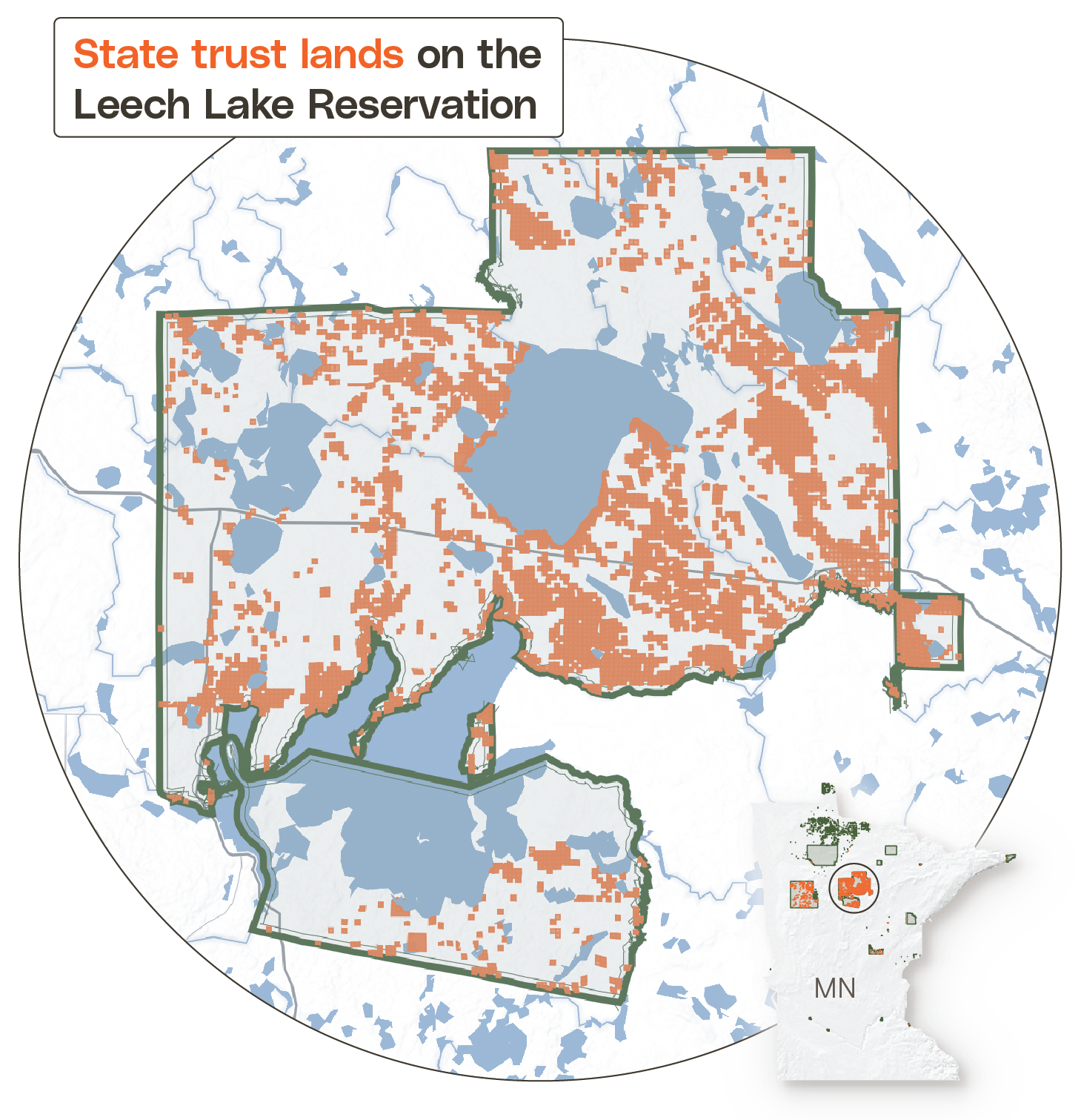
Land return is contentious, but Kunesh has seen support for it from people of all backgrounds while working to pass legislation. “We do need our non-Native communities to stand up and speak the truth as they see it when it comes to returning the lands, and any kind of compensation, back to the tribes.”
But those land returns will also require political support from senators and representatives at both the state and federal level. “Ultimately, it is up to Congress to work with States and other affected interests to find solutions to these land management issues,” the National Association of State Trust Lands’ executive committee said in an email.
In some states, legislators have indicated strong resistance. Utah lawmakers passed a law this year that allows the state’s Trust Land Administration to avoid advertising state land sales. The law gives Utah’s Department of Natural Resources the ability to buy trust land at fair market value, ultimately avoiding possible bidding wars with other entities, like tribes. The legislation came after the Ute Indian Tribe outbid the Department of Natural Resources when trying to buy back almost 30,000 acres of state trust land on their reservation.
“It’s going to have to take the general public to get up in arms over it and say, ‘This is just morally wrong,'” said Stainbrook of the Indian Land Tenure Foundation. “We haven’t gotten to that point where enough people are standing up and saying that.”
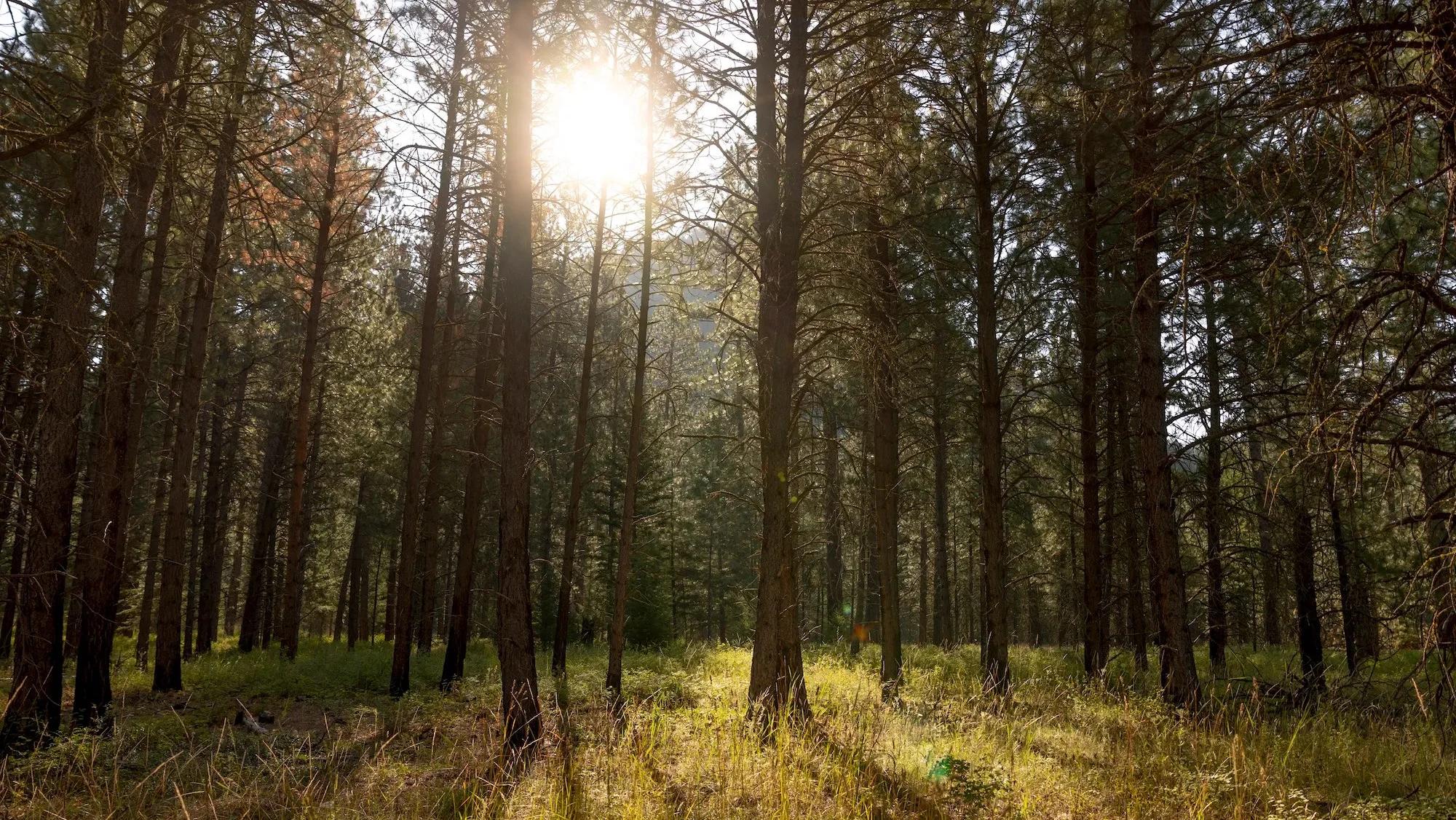
Near the southeast edge of the Flathead Reservation is a place called Jocko Prairie — though it hasn’t looked like a prairie for some time — with stands of large ponderosa pines and other trees crowding in, a result of federal fire-suppression practices on tribal lands. The Confederated Salish and Kootenai Tribes have worked to restore the prairie by keeping out cattle, removing smaller trees, and reintroducing fire. Land that was once crowded with thickets of brush is now opening up, and as more sunlight reaches the ground, grasses and flowers have come back.
This year in early June, a sea of blue-purple camas spread out on the ground under the trees, reactivated by fire after decades of lying dormant. It was a return.
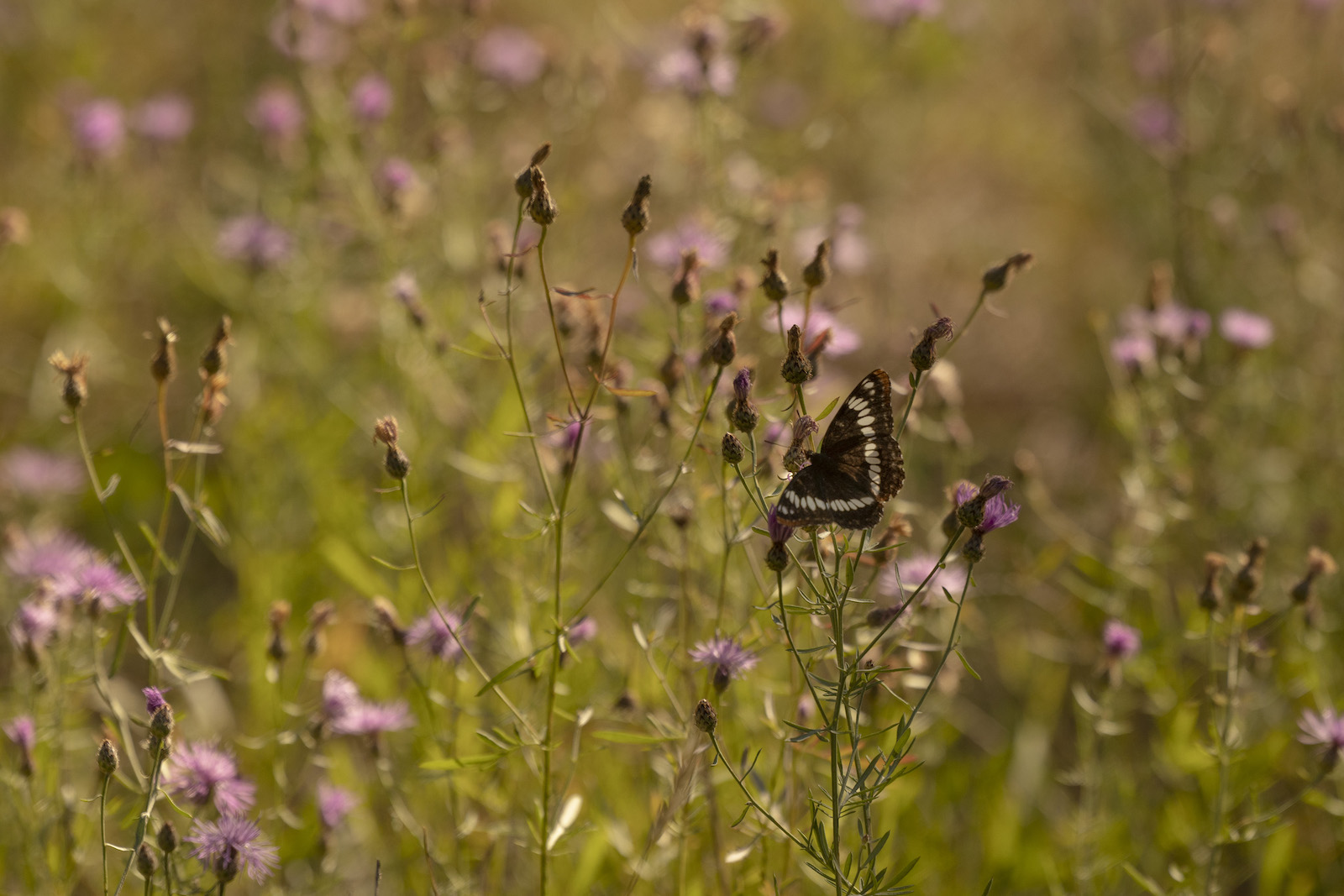
CREDITS
This story was reported and written by Anna V. Smith and Maria Parazo Rose. Data reporting was done by Maria Parazo Rose, Clayton Aldern, and Parker Ziegler. Aldern and Ziegler also produced data visuals and interactives.
Original photography for this project was done by Tailyr Irvine. Roberto (Bear) Guerra and Teresa Chin supervised art direction. Luna Anna Archey designed the magazine layout for High Country News. Rachel Glickhouse coordinated partnerships.
This project was edited by Tristan Ahtone and Kate Schimel. Additional editing by Jennifer Sahn and Katherine Lanpher. Kate Schimel and Jaime Buerger managed production. Meredith Clark did fact-checking, and Annie Fu fact-checked the project’s data. Copy editing by Diane Sylvain.

